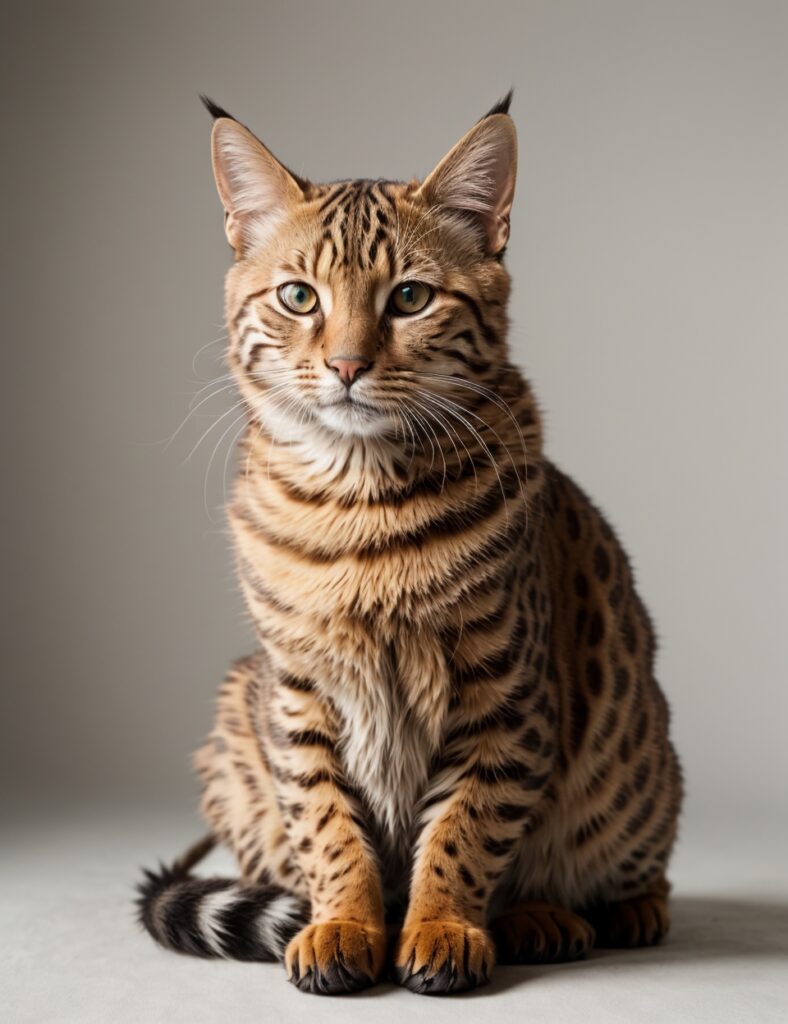Artificial Intelligence – the end for Stock Photographers?
I’ve not written anything so far about AI, and as it is developing so quickly, I thought I might investigate and come up with my own thoughts. Firstly, I’m sure that the AI systems will have a big impact on many industries, and it is also clear that they are in their infancy at the moment. So, issues that I see today are not necessarily going to be there in the future. Will stock photographers be impacted – well, clearly, we will! You only need to look at the efforts of Adobe and Getty to train systems on images where they have access to the copyright through their agreements with people like me and you! Of course, it is easy to say that we didn’t think the agreements would permit them to train systems as they have, but I personally think that they have at least been transparent about it and have made some efforts to compensate the artists for using those images.
I don’t know what the arrangements will be with Getty, but I was quite pleased with my $750 from Adobe. I was already seeing a decline in income due to many other factors. The rise of phone cameras and the general over-supply of images has enabled the agencies to continue to reduce payments to artists – all of these factors played into the dropping income per download. I suppose that each year I already expected a drop in income (or at least flattening income as more images are uploaded to my portfolio) and the rise of AI will be another factor in continuing that trend. That is part of the reason why I have been focusing more on trying to build a wall art business, although it is already clear to me that it requires much more “active participation” to get traction in that field. One great thing about stock photography is that marketing of the images is the role of the agencies, which means it is much more a hands-off business.
I have no crystal ball to see where this ends, but I thought I would try to educate myself a little by trying to create some of my best sellers using Leonardo AI and their PhotoReal system. I had already seen some attempts at creating stock images from a friend of mine:

Of course, it is easy to laugh at these, and someone could rightly say that with multiple attempts and better phrasing of the prompts, such deficiencies could be overcome. And these systems are in their infancy. But I think there is an underlying technology issue here as well. As best I understand, the systems work on calculating the probability that the next pixel they create in an image will be appropriate to meet the needs of the original prompt.
I read a long article about the latest approach (the transformer design which was proposed by Google about 5 years ago). Apparently, the models look at all elements at once to determine the level of interaction between each element. An element can be a word in a sentence or a pixel. The number of computing activities rises as the square of the number of elements and so there is a cost limit on how much information can be processed at once. For the earlier releases it was 8000, I think, which needs 64M computing calculations. It becomes very costly to increase it, although the later models have done that (with $100s of millions of dollars of Nvidia GPUs). That is why the file size is limited in the free models and can become costly in the paid versions. I also read somewhere that each response from Chat/GPT uses up a bottle worth of cooling in the data centers, which gives you some idea of the computing resources required.
So, let’s see how I got on trying to create my own best sellers. Of course, I had to start with my cat, which has earned $5000.

It was somewhat easy to come up with prompts as I already had a picture in mind of what I wanted to create, and I did think this result was not too bad, although nothing like as good as the original!
Not sure I can see this on the side of a bag of cat food…

Then I thought I would try my bag of ice, that I photographed after getting a plastic bag full of cubes from the local store. Again, I wanted something isolated against white. My bag of ice has earned over $2000.

This one (there was a second one that was more ridiculous) shows a very strange view of ice cubes. Isolated against white background was not very well understood as well. Perhaps it could be improved with different prompts, but if an image is already available in the agency portfolio, why go to the trouble to create a different version?
I’ve always thought that these sort of simple stock images – the cat and the bag of ice – would be the easiest to create using AI, but it does show that reality in a photograph is more difficult to create than you might think. I also persuaded myself that my focus on photos of real places would give me a long life in the industry. So, how did Leonardo do with the next best seller – the reflection of the Jefferson Memorial in Washington DC framed by cherry blossoms at dawn?

Once again, I guess this is OK although there are no stepping stones in the real tidal basin and the Jefferson Memorial is not such a simple round shape. There is no portico in this image, but there is in the real location. But does it have the artistic feel of my own image?

I think the answer must be “no”. This one has earned $2500, and I don’t think the AI systems are going to replace it any time soon. In fact, I do wonder if an AI image of a real place that someone wants for a travel article would ever really work? Perhaps I have more life left in the industry than I imagine!
I’m always conscious of the easy answer that these systems are new and are developing rapidly, so how can I possibly predict what is going to happen? But my best guess for the next few years is that stock illustrations are probably the easiest to generate using AI and the agencies would much prefer some assets that they can license to customers that cost nothing to them. They have done it with the buyout of images to offer as free assets to buyers, and once someone has created a good AI generated image and licensed it, you can be sure that the image will then be in the agency portfolio to offer to other buyers at no cost to them. That is one of the intriguing things about AI having no copyright – if a buyer creates something really good with the Getty system, then Getty will be able to add that to their database and offer it to others with no need to rerun the algorithms. A new free asset for them generated through the unpaid efforts of a customer of theirs!
Then stock photos of simple things – an arrangement of Christmas objects on a wooden background would be an easy one to generate and would probably look good. Simple model shots doing a task – applying make-up, shaking hands, reading a book – all sound feasible in the near term. They would be the web-level resolution though. The cost of creating an AI photograph for a large billboard would be astronomic, I think.
But what might be the last thing to fall are real shots of real activities and places – editorial images as an obvious example, and also my photos of real places in great light. I may be wrong, but continuing to shoot those shots might still be profitable for a while yet!
One final point to ponder. AI systems will have a tremendous impact on many fields from coding to customer service and through legal and medical professions. All of those will result in significant financial benefits for the companies involved and so the cost/benefit analysis would result in more investment going into that area. Making photos from thin air is interesting, and fun to play with, but it does make me wonder what the financial benefits are? Where is the income to support it – not from stock agencies, I don’t think. So will the AI investments gravitate towards business uses, not illustrative uses?







Always interesting to read about your opinions on various subjects related to photography licensing and fine art print sales. I like your rational approach. Since my own blog post about AI on the subject of stock photography I have concentrated on editorial and real places photography, as you suggest.
I do try to be rational! I think I have missed your blog post – I will remedy that now! Update – I don’t see that article. I only see three things on your blog for some reason, although there are more in the highlights area.
Great article Steve, thank you. Agree with most points.
I also think that enterprise adoption of AI for image generation is overblown due to other reasons, not limited to technological boundaries. It will “get there” but for now I see a symbiotic coexistence and it will take a while before one replaces the other
The last thing I thought about – the one about the financial cost/benefit analysis made me think. There are so many areas where businesses can both make money and save costs, and supporting businesses doing that is how the AI companies can make money. Creating nice photos from prompts is more of a pastime and I do wonder if the investments needed to make it perfect are really worth it.
Don’t worry. You even replied to it . http://alessandrachaves.com/2023/01/20/artificial-intelligence-ai-and-stock-photography/
Oh, yes – it was some time ago. My final comment was perhaps not correct when I said my cat would lose sales. Perhaps not yet!
some people are I presume making money ,just look at this adobe ( best seller )portfolio 99% ai ,https://stock.adobe.com/fr/contributor/211250940/Prasanth
That is a good point, but there has always been competition from up and coming contributors, and AI does allow a lot more to be added to the millions already there. I was thinking more of the actual user making use of these tools to create their own image rather than licensing mine. In that scenario, the user is less skilled, they want to spend less time, and perhaps they will find it easier to use an existing image for $3 rather than waste their own effort.
Fascinating article. Very, very well done. Thanks for the insights, as always!
Sorry – this got stuck in Spam
No problem. Overall, like many of us, I am concerned about how AI will affect our earnings in the future. It would be interesting to revisit this post in 2028 and again in 2033!
Yes, it could have a major impact, or perhaps not for travel related stuff. It is unknowable, I guess!